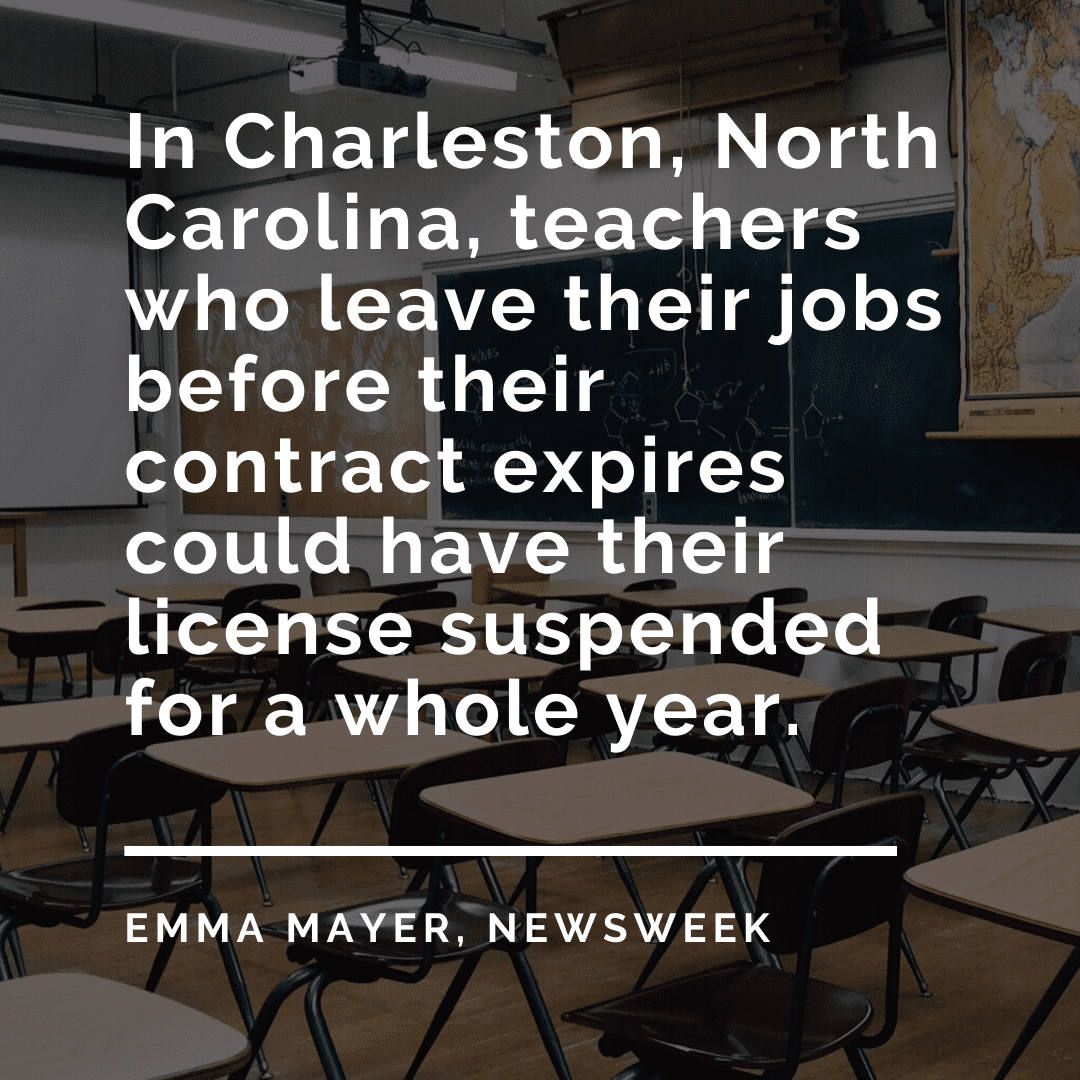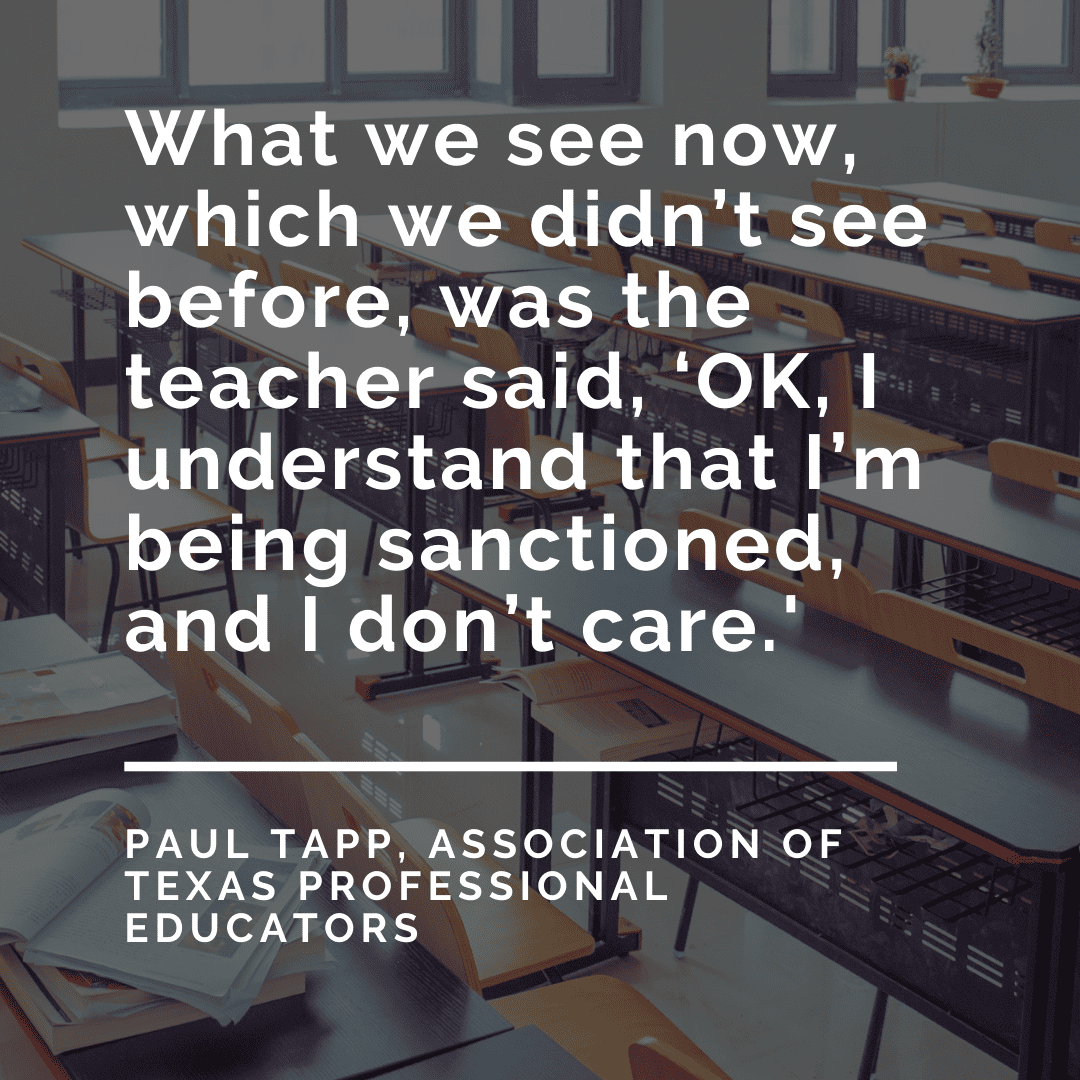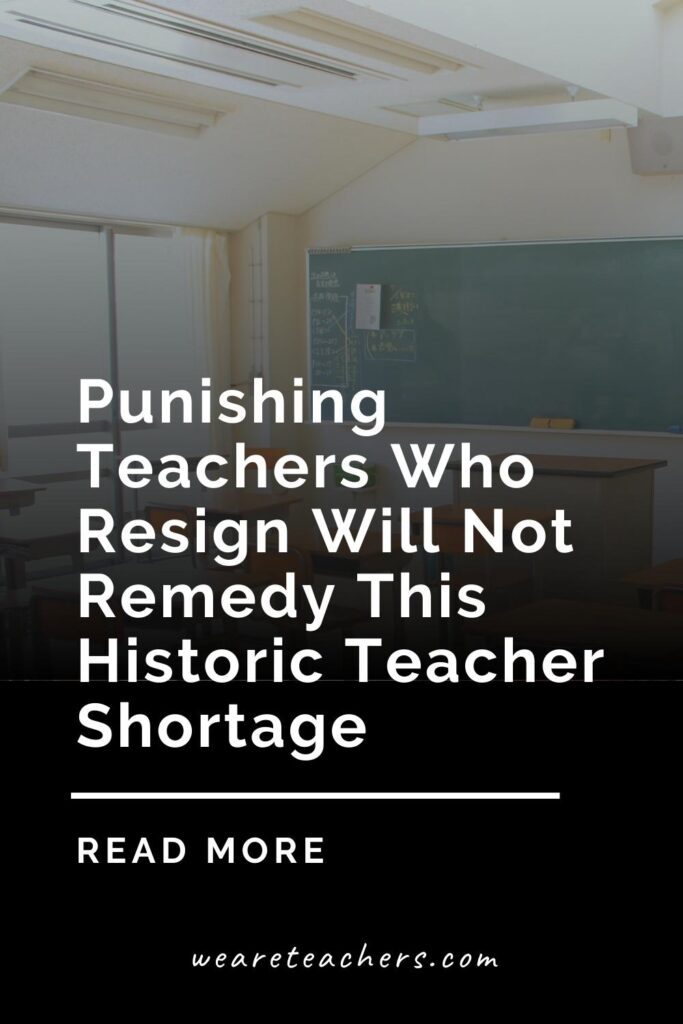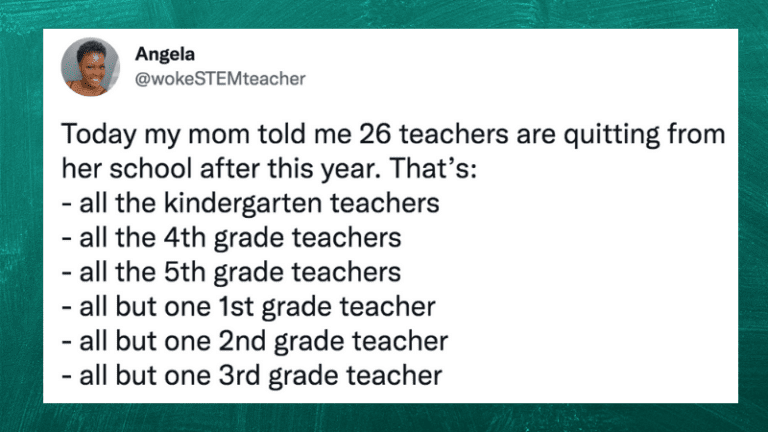According to the Bureau of Labor Statistics, approximately 600,000 public school teachers quit their jobs between January 2020 and March 2022. Even more worrisome is that teachers are choosing to leave before the end of the school year. The state of Texas alone witnessed a 60% increase in teachers leaving their classrooms mid-year in the 2021-2022 school year. Something is wrong in public education, and teachers need help. Some districts, however, seem to believe that scaring teachers into staying in their classrooms is a reasonable solution.
Leave the classroom, lose your license

Teachers leaving their classroom mid–school year is never ideal. As a result, teacher contracts often include penalties for abandoning their contracts. In previous years, however, not nearly as many teachers left their positions mid-year. And when they did, many districts chose not to pursue disciplinary action. But with more teachers unable or unwilling to wait until summer to leave their positions, some districts have begun to take a harder line. In Texas, for example, the State Board for Educator Certification has suspended more than 300 teachers’ licenses due to “job abandonment.” The threat of losing the ability to teach for a year or two is enough to make many educators think twice about leaving. Teachers in South Carolina and several other states have also been faced with losing their teaching licenses if they leave mid-year. But what message is this sending to teachers?
Failing to read the room

While many teachers who need their jobs to survive will stay out of fear, this tactic might not be successful for much longer. Paul Tapp, an attorney for the Association of Texas Professional Educators, has counseled teachers who are considering leaving their positions mid-year for over 25 years. In an interview, he shared that this current increase of resignations is unprecedented. “What we see now, which we didn’t see before,” he stated, “was the teacher said, ‘OK, I understand that I’m being sanctioned, and I don’t care.’” Teachers are reaching a breaking point. What will districts do when threatening to suspend their teaching licenses fails to keep them in the classroom?
Putting a Band-Aid on a broken bone

Signs are already indicating that this type of negative reinforcement isn’t going to stay effective for long. In February, Texas’ State Board of Education agreed to revise the wording regarding contract abandonment after months of meetings and negotiation with the Texas American Federation of Teachers. Formerly, a teacher could have their license suspended if they resigned mid-year without good cause or mitigating circumstances. But “good cause,” and “mitigating circumstances” were poorly defined and open to differing interpretations. The new language provides a bit more context for these terms. Now, a teacher in Texas won’t face potential penalties if one of three circumstances exist:
- The educator moves to a new teaching position that requires a different certification.
- An educator resigns due to working conditions that reasonably met an “immediate threat of significant physical harm.”
- The educator experiences a reduction in base pay compared to their last year of teaching.
The Texas AFT is right to tout this victory. We should never force teachers to choose between their livelihood and their safety. But many teachers still have concerns. What about teachers whose mental, not physical, health is in immediate threat of significant harm? What if the job expectations and workload are unsustainable? For example, Texas K-3 grade teachers recently learned they must complete a 60-to-120-hour course on reading if they wish to return to their jobs in 2023. And, most importantly, what, if anything, is being done to address the conditions that are causing teachers to flee the profession and keeping young people from joining it?
Support, not suspension

Although more teachers are having their teaching licenses suspended than ever before, not all districts think this is the right way to keep teachers in their classrooms. Districts struggling to find teachers are trying sign-on bonuses to attract teachers to apply. Districts in New Jersey, Oklahoma, and South Carolina are offering signing bonuses of $1,000 to $4,000. Guilford County Schools in North Carolina is offering a $20,000 signing bonus to new teachers who agree to work in one of the district’s lowest-performing schools and meet certain other requirements. In Colorado, West Grand School District began offering free child care as an incentive to lure teachers to their schools.
What we really, really want

Bonuses and perks are lovely, but it’s not what teachers really want. What many teachers are becoming vocal advocates for is true, sustainable change. Teachers want to be heard. They want their experience and professionalism to be recognized and respected. And they want their students and schools to be fully supported and fully funded. Teachers have reached a tipping point. And unless serious change is implemented, threatening to suspend teaching licenses isn’t going to be enough to keep teachers in their classrooms.
Have you thought about leaving a teaching position mid-year? Share your story in our WeAreTeachers Helpline group on Facebook.


